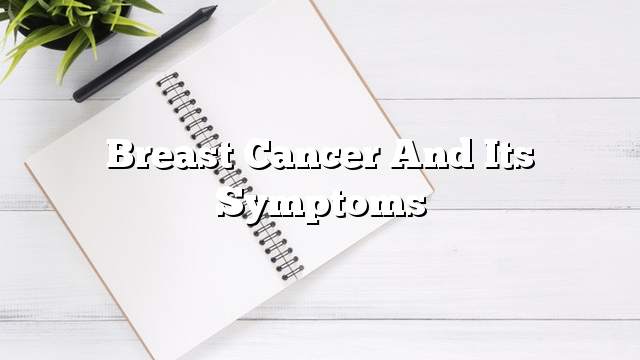breast cancer
The breast mainly consists of fat, tissue, thyroid glands, and billions of microscopic cells that undergo a complete life cycle that ends with the death of many cells, to be regenerated by splitting the existing living cells. In cases of breast cancer, the cancer cells in the breast Also in a life cycle like other healthy cells, where infected cells begin to divide, and spread in the breast and the rest of the body.
Causes of breast cancer
Lifestyle
- Smoking, as studies have confirmed that the greater the amount of smoking, the increased risk of breast cancer.
- Lack of physical activity daily, sit for long periods.
- Many scientific studies confirm a close relationship between abortions and breast cancer.
- Use pills.
- Continuous exposure to radiation, chemicals.
- Scientific studies have found that the adoption of high-fat foods and cholesterol increases the risk of disease.
- The presence of benign tumors in the breast, which may increase the likelihood of the development of these tumors to cancerous tumors malignant.
- Aging, as the risk of cancer increases in women as they age.
- Women’s delayed access to safe age, and continued menstruation beyond the age of fifty.
- Different cancers, such as ovarian cancer.
Note: In many cases with breast cancer, the background of the disease is not due to any of the previous causes.
Genetic factors
Scientists in genetic sciences believe that genetic factors may be a major cause of breast cancer. These studies found that 5-10% of breast cancer cases are due to purely genetic factors. Women born to mothers with breast cancer are twice as likely to develop the disease at the same time Later.
Symptoms of breast cancer
The symptoms of breast cancer are numerous, but most noticeable are the presence of a lump in the breast, or in the armpits, which are lumpy, hard, irregular, often painless, and painful in some cases. Other symptoms are:
- Irritation in the skin of the breast.
- Pain in the breast, especially in the nipple.
- Nipple shrinkage inward.
- Redness and irritation of the skin of the breast, and thickening of the skin.
- The presence of a lump or swelling under the arms, namely in the lymph nodes specifically.
- Yellow discharge, or red discharge from the nipple.
Note: These symptoms may be related to diseases other than breast cancer, and in any case, medical advice should be taken when these symptoms are present.
Finally, the risk of breast cancer can be reduced by following a healthy diet, frequent fiber intake, regular exercise, and a doctor’s appointment.
